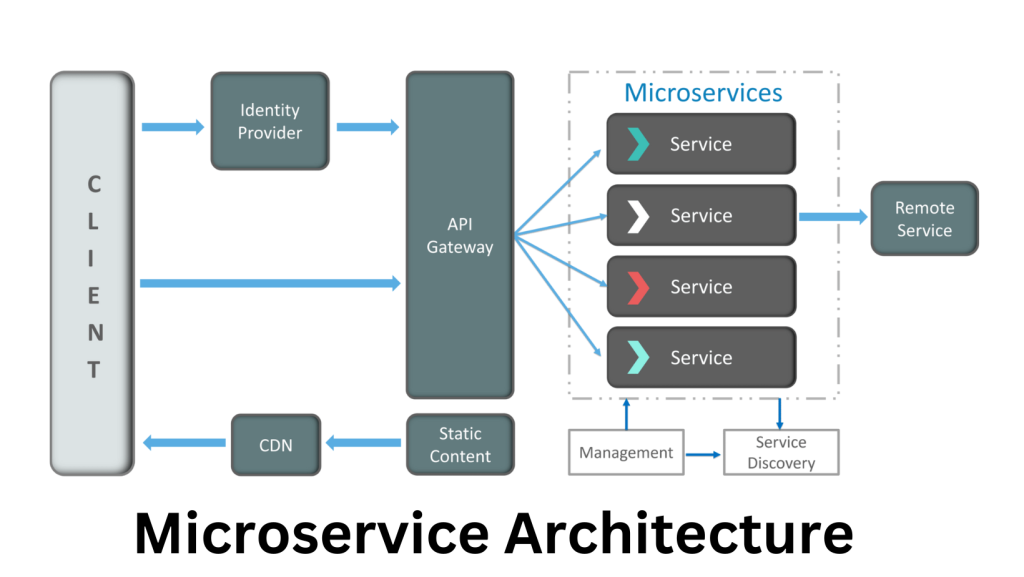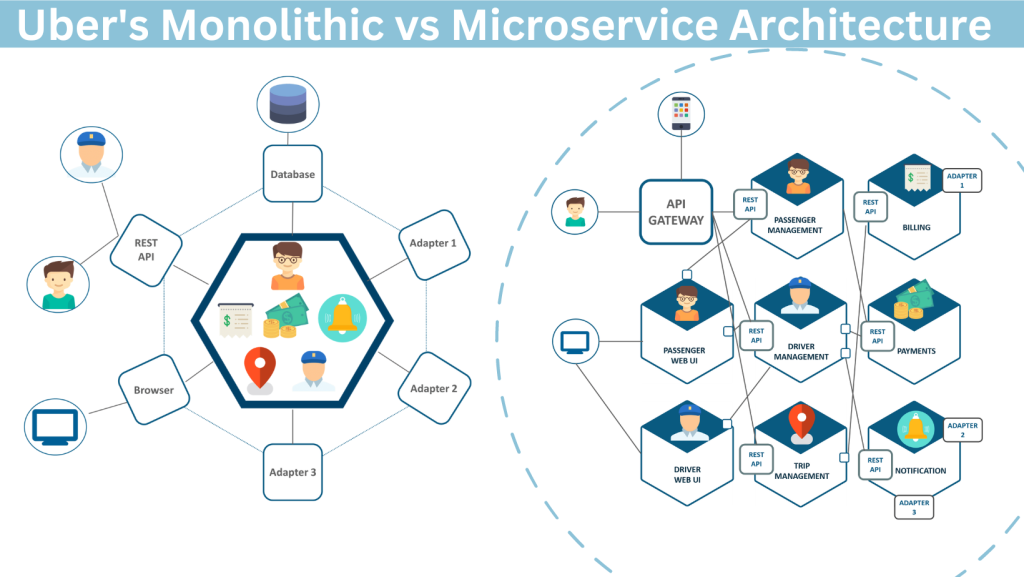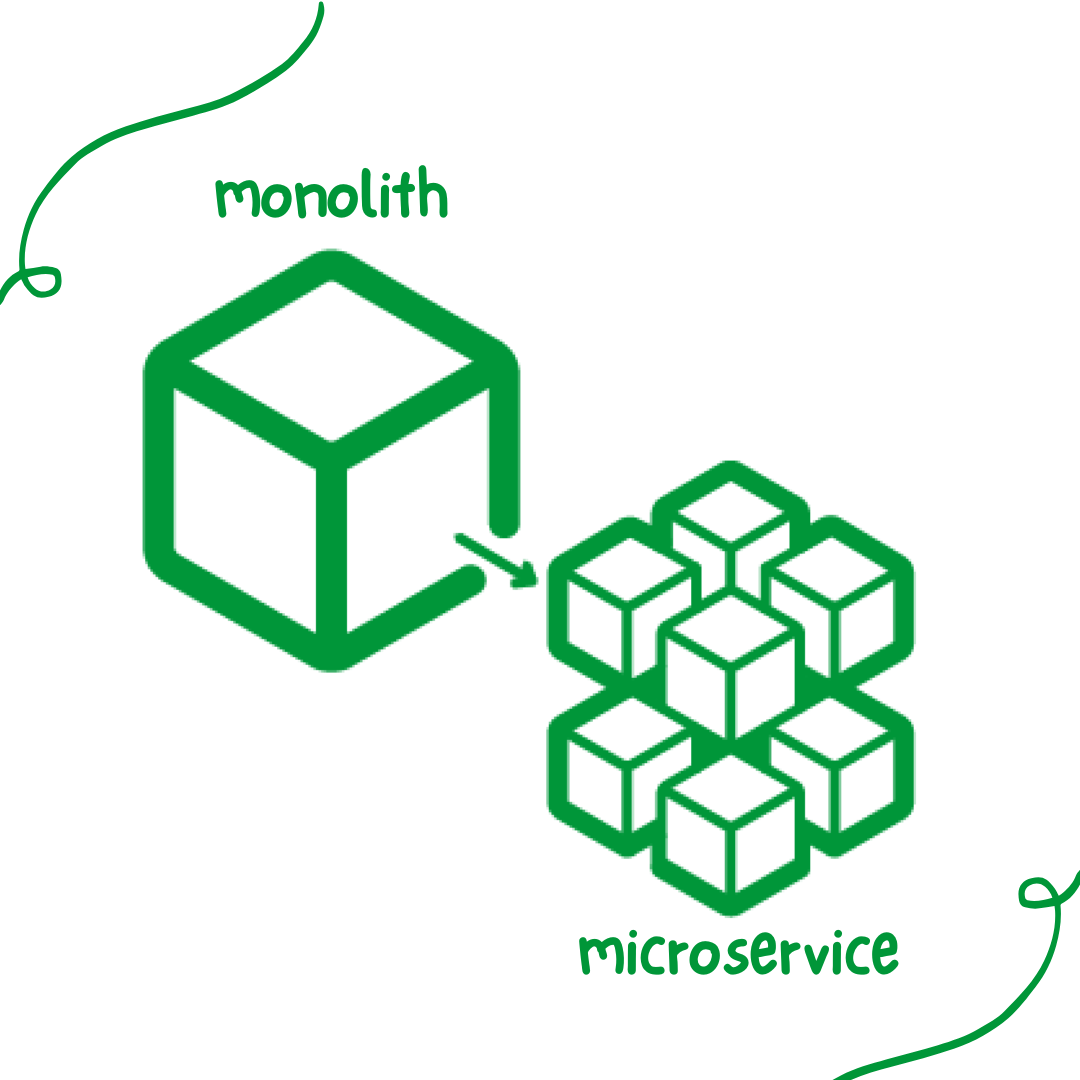Microservice is a software development strategy that is increasing in popularity due to its ability to construct and maintain complex systems more efficiently. In a microservices architecture, an application is constructed as a collection of tiny, independent services that communicate using lightweight protocols. This method offers several advantages over traditional monolithic architectures, including enhanced scalability, defect isolation, and maintenance.
In a microservice architecture, an application is divided into a collection of tiny, independent services that can be independently developed, deployed, and managed. Each service concentrates on a particular business capability and communicates with other services via lightweight protocols such as REST or gRPC.

Microservices are intended to be extremely scalable and fault-tolerant, with each service having its own process and data store. This enables services to be independently scaled based on demand and provides fault isolation, so a failure in one service does not impact the entire application.
Monolith vs Microservice Architecture:
In a monolithic architecture, an application is constructed as a singular, self-contained unit. All business logic and functionality are firmly coupled, making it challenging to make modifications or add new features without affecting other portions of the application. In order to scale a monolithic application, the entire application must be replicated to accommodate increased demand.
Microservice, on the other hand, offers a more modular and adaptable approach to application development. With each service concentrating on a distinct business capability, it is simpler to make modifications or add new features without affecting other sections of the application. In addition, microservices can be scaled independently based on demand, enabling organizations to manage traffic spikes more effectively.

Benefits of Microservice
One of the most significant advantages of a microservice is enhanced scalability. With each service operating independently, it is simpler to scale specific application components based on demand. This enables organizations to handle traffic spikes more effectively without scaling the complete application.
Additionally, microservices offer enhanced fault isolation. Due to the fact that each service runs in its own process and has its own data store, a malfunction in one service does not affect the application as a whole. This can help to reduce downtime and increase system reliability overall.
Lastly, microservices provide enhanced maintainability. With each service concentrating on a distinct business capability, it is simpler to make modifications or add new features without affecting other sections of the application. Additionally, services can be developed, deployed, and managed independently, which simplifies system maintenance and updates.
Design Principles
When developing a microservice architecture, it is crucial to consider a number of essential design principles. Firstly, services should be developed with a narrow focus on a specific business capability. This contributes to the application’s modularity and flexibility, making it simpler to add new features or make modifications without affecting other sections.
Secondly, services should communicate using lightweight protocols such as REST and gRPC. This promotes loose coupling and allows services to be independently developed, deployed, and managed.
Thirdly, governance should be decentralized, with each service accountable for its own data repository and business logic. In addition to fostering scalability and fault isolation, this allows for greater flexibility and agility.
Implementation of a Microservice
Implementing a microservice architecture requires meticulous planning and coordination in practice. Services must be designed to be limited and specialized, with distinct boundaries. Moreover, services must be independently developed, deployed, and managed, with each service having its own data store and business logic.
Containerization technologies such as Docker and Kubernetes can facilitate efficient service discovery and load balancing in addition to easing deployment and scaling. In addition, employing continuous delivery and deployment practices can aid in streamlining the development and deployment process, allowing for more frequent and rapid releases.
Managing a microservices architecture necessitates the implementation of monitoring and logging solutions. Multiple independent services can make it difficult to identify and diagnose problems. Implementing a centralized logging and monitoring solution can help provide visibility into the entire system, making it easier to rapidly identify and resolve problems.
Use Cases
Microservices have been implemented in numerous industries, such as e-commerce, healthcare, and financial services. E-commerce platforms such as Amazon and eBay, for instance, use microservices to manage the vast quantity of data and transactions they process daily.

In healthcare, microservices can be used to create systems for electronic health records or telemedicine platforms, where different services can manage patient data, appointment scheduling, and healthcare provider-patient communication. Financial services can also benefit from microservices, in which services can be developed and deployed independently to perform various functions such as account management, transaction processing, and fraud detection.
Challenges
While microservices offer numerous advantages over traditional monolithic architectures, they also present their own set of difficulties. Managing a distributed system’s increased complexity is one of its greatest obstacles. It can be challenging to ensure that the system as a whole is operating appropriately when multiple services operate independently.
In addition to effective service discovery and load balancing, administering a microservices architecture requires effective load balancing. When multiple services operate independently, it can be difficult to ensure that requests are routed to the correct service. Implementing a service registry and load balancer can facilitate the simplification of this procedure.
Coordination of multiple services can also result in an increase in administrative costs. While microservices offer increased flexibility and agility, they also necessitate increased team coordination and communication. This can lead to increased costs and delayed development cycles.
Best Practise
To ensure the success of a microservices architecture, it is essential to adhere to certain best practices. First, services should be designed to be limited and specialized, with distinct boundaries. This contributes to the application’s modularity and flexibility, making it simpler to make changes and introduce new features without affecting other sections.
Second, containerization technologies such as Docker and Kubernetes should be utilized to facilitate efficient service discovery and load balancing, as well as to expedite deployment and scaling. In addition, employing continuous delivery and deployment practices can aid in streamlining the development and deployment process, allowing for more frequent and rapid releases.
Third, monitoring and archiving solutions that provide visibility into the entire system should be implemented. This can help to rapidly identify and resolve issues, minimizing system downtime and increasing system reliability overall.
For the management of a microservices architecture, effective communication and collaboration between teams are crucial. With multiple services operating independently, it is essential that teams coordinate and communicate effectively to avoid misaligned efforts.
Conclusion
Microservices offer several advantages over traditional monolithic architectures, including enhanced scalability, defect isolation, and maintenance. However, they come with their own set of difficulties, such as the increased complexity of administering a distributed system and the requirement for effective service discovery and load balancing.
By adhering to best practices for designing, deploying, and managing microservices, organizations can maximize the benefits of this strategy while mitigating the difficulties. With careful planning and coordination, microservices can facilitate the development of systems that are more efficient, resilient, and adaptable to changing business requirements.

